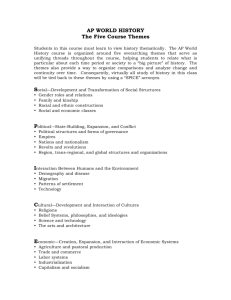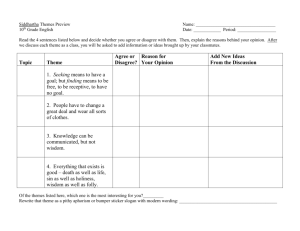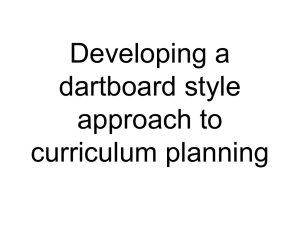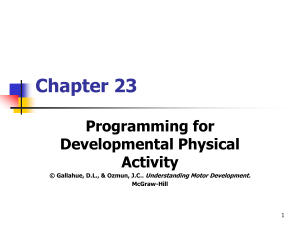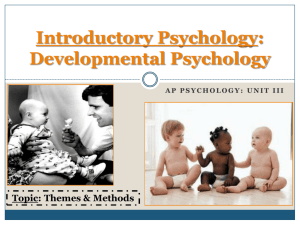The teacher role in planning the environment consists of several
advertisement
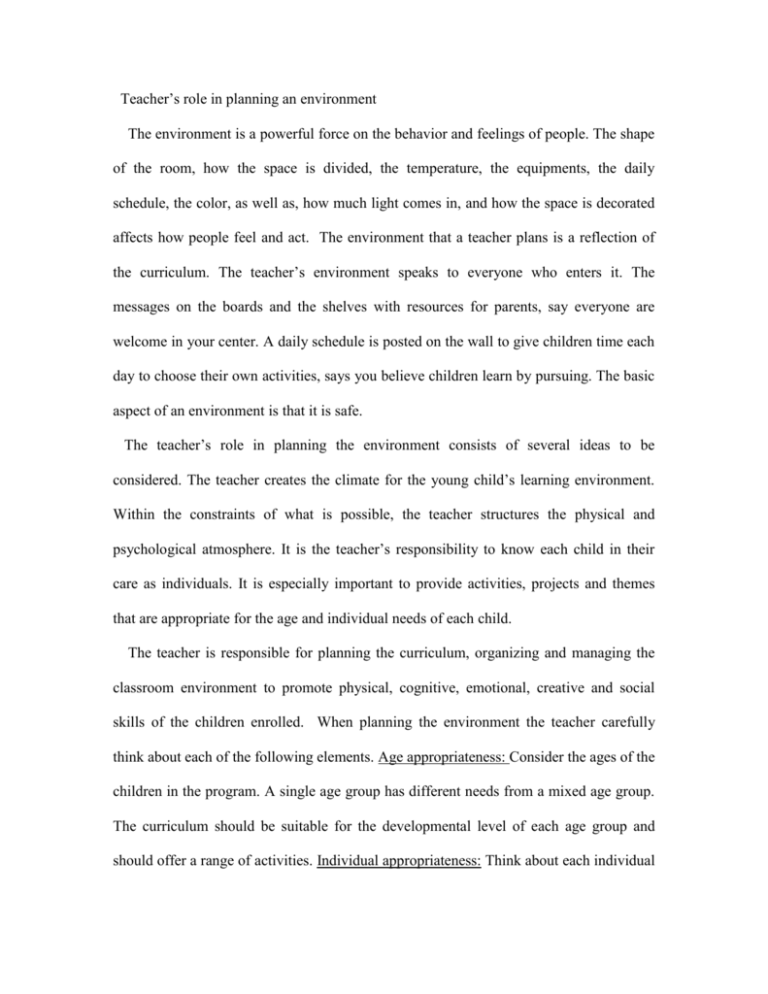
Teacher’s role in planning an environment The environment is a powerful force on the behavior and feelings of people. The shape of the room, how the space is divided, the temperature, the equipments, the daily schedule, the color, as well as, how much light comes in, and how the space is decorated affects how people feel and act. The environment that a teacher plans is a reflection of the curriculum. The teacher’s environment speaks to everyone who enters it. The messages on the boards and the shelves with resources for parents, say everyone are welcome in your center. A daily schedule is posted on the wall to give children time each day to choose their own activities, says you believe children learn by pursuing. The basic aspect of an environment is that it is safe. The teacher’s role in planning the environment consists of several ideas to be considered. The teacher creates the climate for the young child’s learning environment. Within the constraints of what is possible, the teacher structures the physical and psychological atmosphere. It is the teacher’s responsibility to know each child in their care as individuals. It is especially important to provide activities, projects and themes that are appropriate for the age and individual needs of each child. The teacher is responsible for planning the curriculum, organizing and managing the classroom environment to promote physical, cognitive, emotional, creative and social skills of the children enrolled. When planning the environment the teacher carefully think about each of the following elements. Age appropriateness: Consider the ages of the children in the program. A single age group has different needs from a mixed age group. The curriculum should be suitable for the developmental level of each age group and should offer a range of activities. Individual appropriateness: Think about each individual child and focus on his or her developmental needs. The individual interests, abilities and family background must be understood before you can meet the needs of each child. Planning should center on the child, the family and the child’s everyday experiences. Family and culture: Plan activities with respect for family difference and wishes. Involve families in program planning. Transitions: Transitions are times that occur between activities and can disrupt the flow of play. The teacher plans carefully to ensure that transition times are smooth. Curriculum: After preliminary planning, it is time to choose themes, projects and activities to build the total curriculum. Themes are selected that relate closely to the child’s immediate world. For example, activities associated with the home, family and community holds the most meaning for the youngest child. As the children develop, their knowledge and interests expands. Themes can be used for a brief time, but usually should last at least a week. One theme usually leads to another. The teacher’s role in planning themes is to observe closely and take notes on the children’s interest. The teacher helps children to develop interests through planning and presenting a variety of materials, including books, pictures, activities and explorative projects. Group time: Planning individual times and group time is important. During these planned times, all areas of development are addressed in a social setting. Group times fit into the whole curriculum and support themes and projects. Activities are specific strategies planned to achieve theme and developmental goals. Physical environments: Whatever is planned must be flexible and changeable depending on the needs of the children. The most complex part of planning the physical environment is coordinating the learning areas. An environment that encourages flexibility and spontaneity for children’s play is essential. The teacher provides an effective range of physical activities through movement. Movement plays an important role to help children to explore and exercise their physical abilities. Integrating movement into the curriculum allows children to use their physical energy constructively and contributes to a more positive tone in the group, as well as, teaches important concepts and skills. Language is a very personal thing. It reflects not only the child’s stage of development, but also his family life-style. A teacher promotes language through communication, music, and books. Language is demonstrated in all areas of the environment. A teacher promotes interaction and learning by creating an environment that supports and challenges child and at the same time, is comfortable for both adults and children. The teacher becomes a “Child Watcher”, observing a child, recording language being used or evaluating a child’s use of a specific skill. As the teacher moves around the environment he or she serves as a resource for children who need help with a project. In this role the teacher listens and asks questions, which helps children to develop problem solving skills. The teacher observes how the center is functioning and the children’s use of the areas. The teacher serves as a facilitator, making materials available in the setting where the children can work undisturbed and motivating them to experiment and discover. A teacher demonstrates the essential disposition and skills to develop positive, respectful relationships with children whose cultures and language may differ from their own, as well as, children who may have developmental delays, disabilities or learning challenges. I believe that it is our job as early childhood teachers to make sure that the classrooms include all kinds of people doing all sorts of things and living out their daily lives in many different ways. This can be done through many visual images such as pictures or representations in the form of artwork and objects from daily life. What is the teacher’s role in planning the environment?

